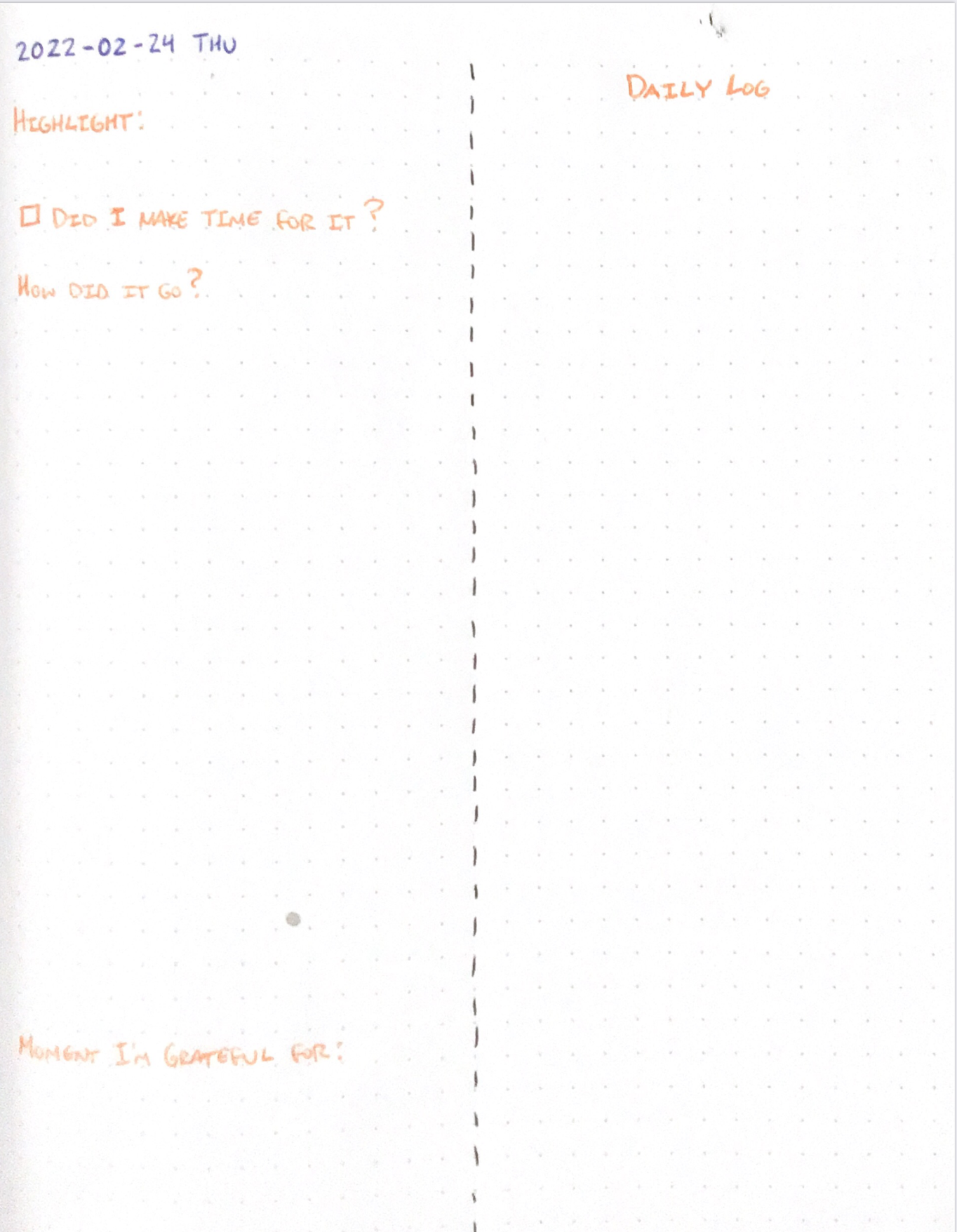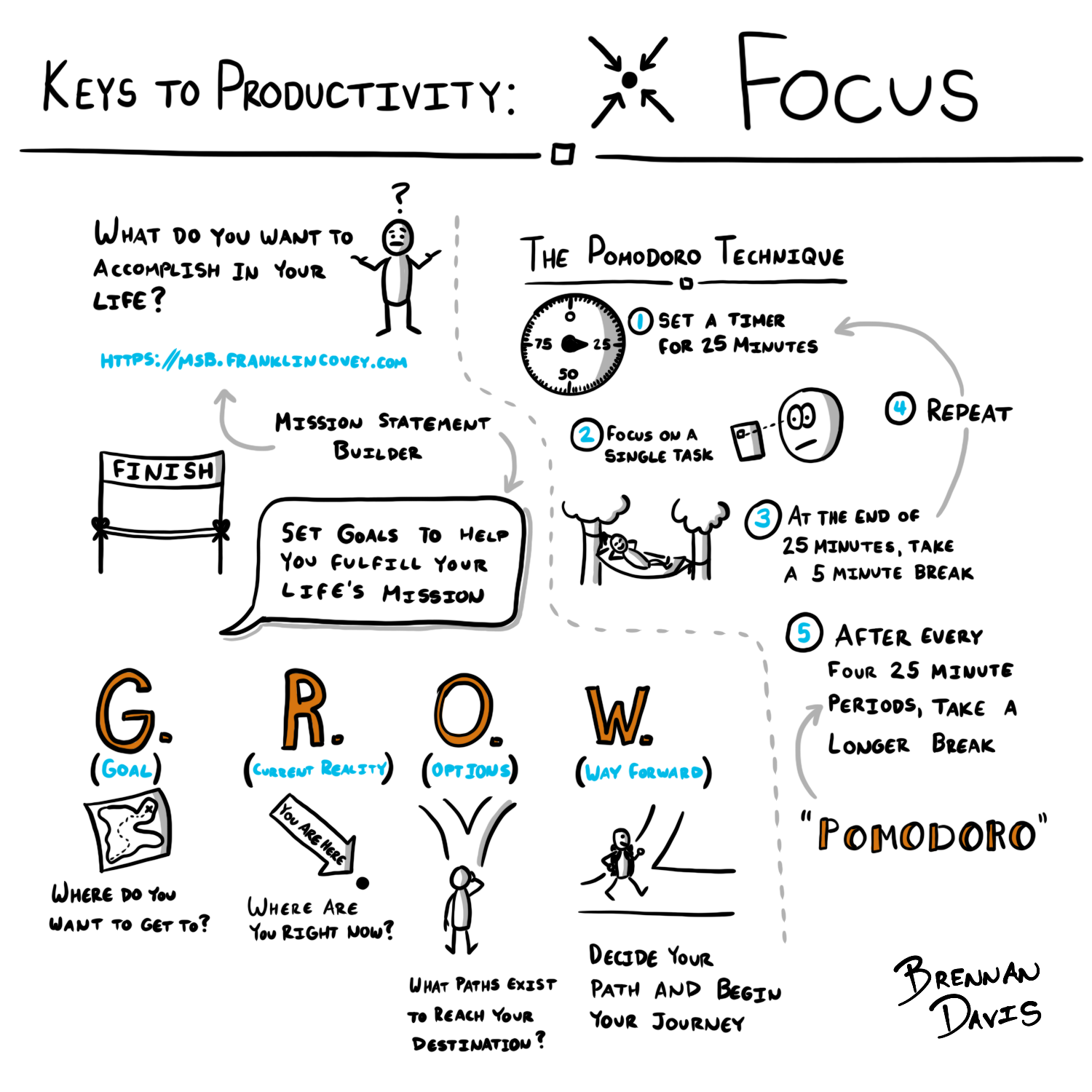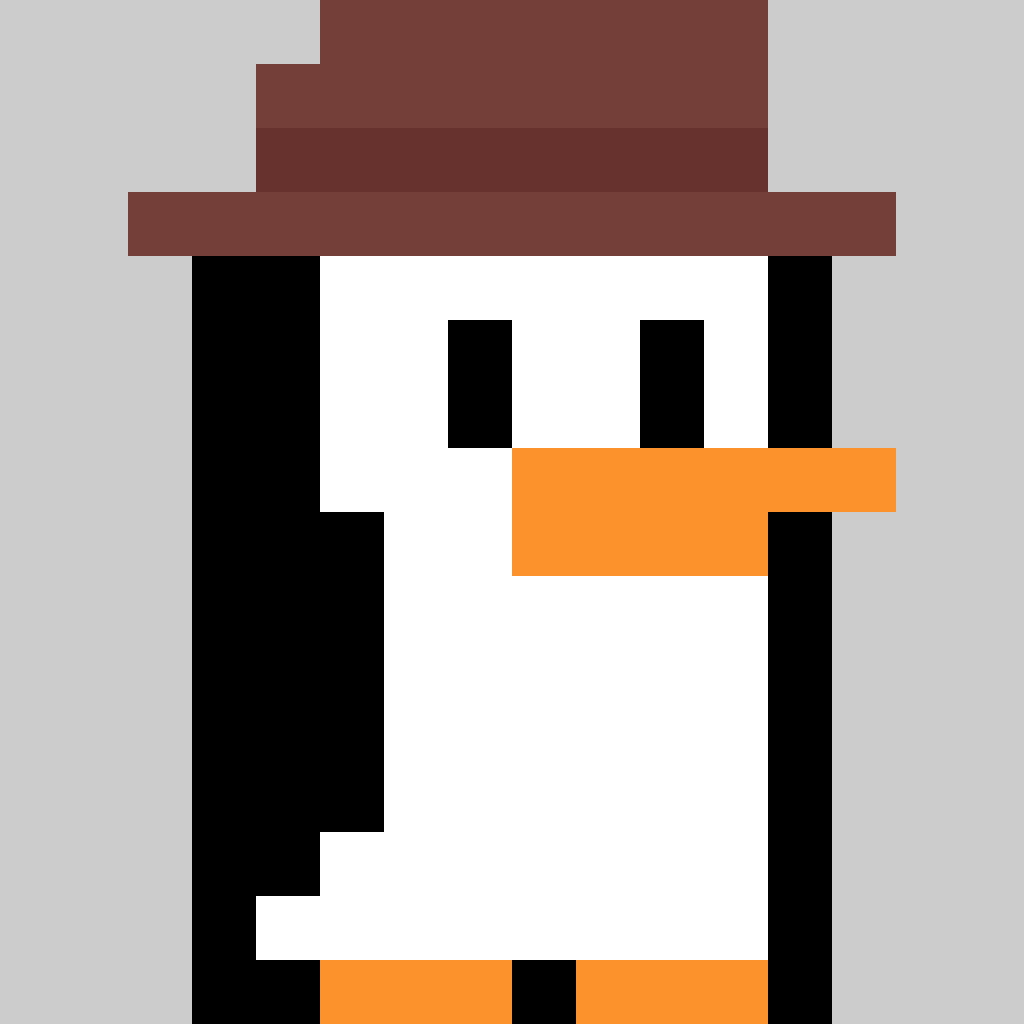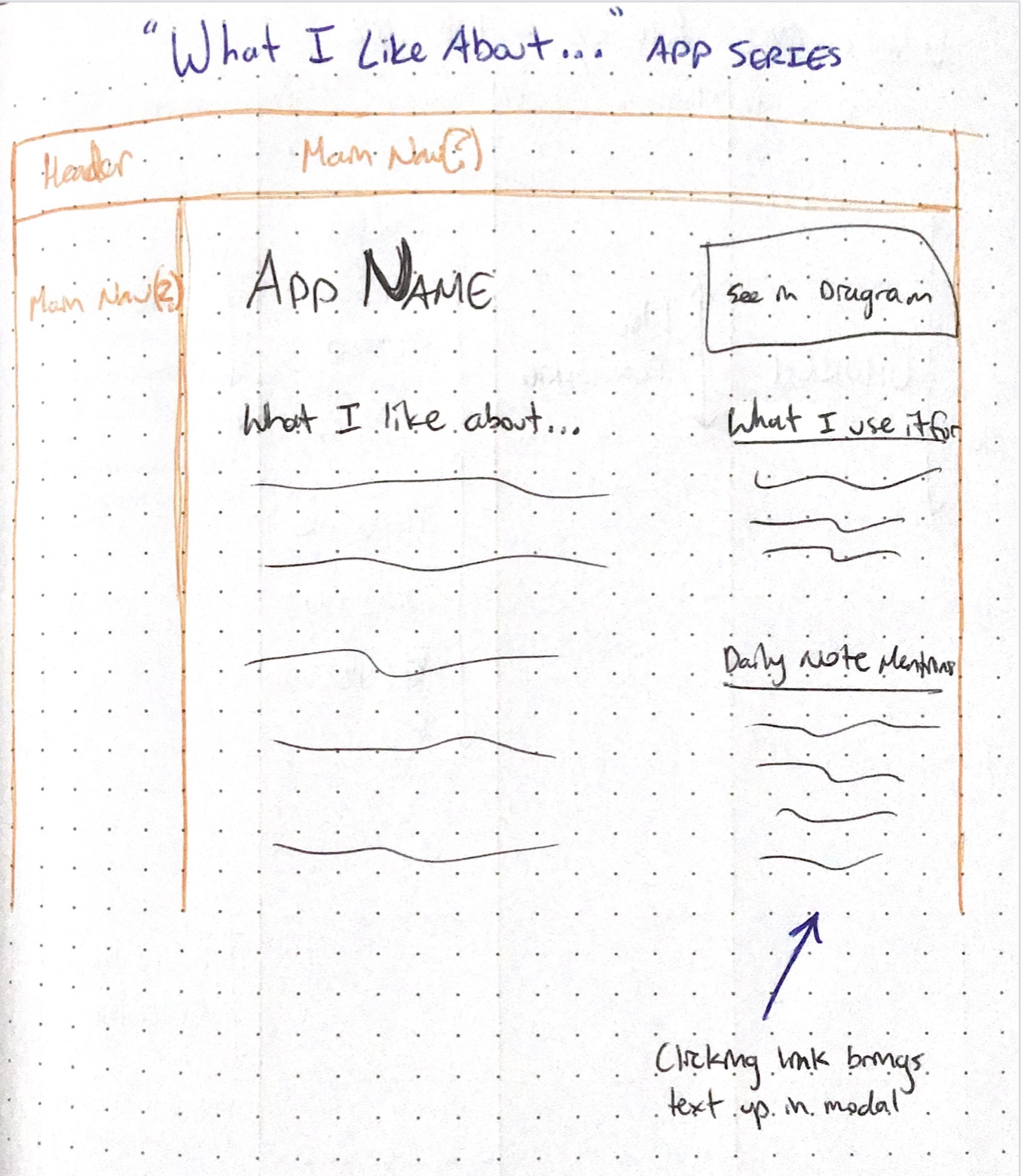February 2022 Daily Notes
2.28.22
The last 3 Keys to Productivity Sketchnotes (Recording, Simplification, Trust) have been published! You can check them out here:
2.25.22
Book: The Bullet Journal Method
Notes I took while reading a section on task Migration in The Bullet Journal Method:
- Just because you can do a thing doesn't mean you should.
Productivity is about getting more done by working on fewer things
- It's normal to not get every task on your list done. Instead of feeling guilty, think about why you didn't get them done. Is it something you still need to do? What will happen if you don't do it? Cross them off your list if they're no longer relevant.
2.24.22
I've published another Key to Productivity Sketchnote, Iteration. You can check it out here:
Keys to Productivity: Iteration
2.23.22
My current Bullet Journal daily page template:

The left column is for my daily Highlight (the main thing I want to get done that day).
The right column is for rapid logging tasks, events, and notes.
2.22.22
Book: The Bullet Journal Method
Notes I took while reading a section on Rapid Logging in The Bullet Journal Method:
-
Bullet Journal Principles in Things 3:
-
Areas and Projects --> Bullet Journal Collections
-
Tasks with Subtasks can be converted to Things 3 Projects just as Tasks with Subtasks can be converted to Bullet Journal Collections
-
Instead of migrating my Daily Log tasks to Bullet Journal Collections, I move them to Things 3 Areas / Projects.
-
-
Be objective and brief as possible when rapid logging events. This makes them quick to write down, and provide an objective look at events. Write your feelings down during long form journaling.
2.21.22
Book: The Bullet Journal Method
Notes I took while reading a section on Notebooks in The Bullet Journal Method:
-
Using a physical notebook allows us to unplug and free ourselves from the distractions of technology. It allows us breathing room to think, ponder, and reflect.
-
A notebook is a flexible tool that can be made into whatever you need it to be. You're not beholden to anyone else's systems: you create the system.
-
Your collection of Bullet Journals becomes a "library of your life."
-
The Bullet Journal and productivity apps are not mutually exclusive. There are strengths and weaknesses to all tools, and I personally use several productivity apps and a Bullet Journal to create a hybrid digital / analog system that plays to the strengths of each tool. Tools only provide value if they help you effectively accomplish the tasks you're using them for.
2.19.22
Video: The Productivity Tool Doesn't Matter
Notes I took on the above video:
-
The point of this video was to actually say that tools do matter. You wouldn't say to a carpenter they have to build a desk using only a screw. There are tools out there that will get the job done more efficiently.
-
You shouldn't have to spend large amounts of money on fancy productivity tools, but that doesn't mean those tools can't help you be more productive.
-
If an app like Obsidian, with it's back-linking and knowledge graph, helps you to get more work done, then by all means, use it.
-
You can apply productivity principles to any tool, so it doesn't matter what tool you choose in that sense. Experiment with tools in order to find the ones that fill your needs.
2.18.22
I've started reading The Bullet Journal Method, and in it the author, Ryder Carroll, has you do an exercise called The Mental Inventory. You divide a piece of paper into 3 columns, the first titled "Working On", the middle "Should Be Working On", and the last "Want to Be Working On". You then fill in these columns with everything in your head so you can then take a look and evaluate the meaningfulness of each item. If an item doesn't matter to you or someone you love, or isn't absolutely necessary, then you cross it off the list. I did this exercise today, and found I didn't have too many items to cross off. I've done this type of exercise in the past, and already eliminated many of the needless things I was doing. It felt good to see that. I mostly crossed things off in the "Want to Be Working On" list as they are things I haven't started yet, and can more easily let them go. They're things that I could put back on my lists someday, but for now they're just distractions. Some of the items in the "Working On" list were close to being complete, so I went ahead and finished them off. It felt good to close those open loops. All in all, the exercise was helpful in getting some things off of my task list, and I'm glad I took the time to do it. I imagine it'll be a good exercise to do periodically.
2.17.22
I've published the next Keys to Productivity Sketchnote, Focus. You can check it out here:
I revised it from it's original form where I had included an explanation of the Pomodoro Technique. I decided I want these Sketchnotes to be more general so I don't have to constantly update them as methods and apps go in and out of style. For the sake of comparison, here's what the original Sketchnote looked like so you can see for yourself the changes that were made:

2.16.22
Article: How to Remember What You Read
Notes I took on the above article:
-
Write what you know about the book / article / video before you read / watch it, then write what you learn after each reading session.
-
Write in the margins. Have a conversation with the author.
-
Stop reading if you get bored
- Don't waste your time finishing something that isn't interesting to you.
- Just because you paid for it doesn't mean you have to finish it (same thing goes with food at a restaurant)
-
Teach someone else what you just learned; return to the source material to fill in identified gaps
-
Make connections between ideas
-
The goal isn't to read as many books as possible: the goal is to gain as much wisdom as possible.
2.15.22
I signed up for Nick Milo's Linking Your Thinking newsletter, and he sent one several weeks ago where he talked about relevance over structure. You only need to add structure when needed. He talked about meta data, and how many have wasted away their time by obsessing over it. I am one of those people, something I've mentioned many times in my daily notes. I found myself the other day going through all my notes and fixing meta data again, and realized how much time I was wasting. Nick suggests having as little meta data as possible so as to make it easier to upkeep your notes, and reduce cognitive load. I am doing better at focusing on the content of my notes, but old habits are hard to break. I'm going to keep trying, though, because I've had a lot more note making sessions where I've gained valuable insights lately. It's an amazing experience.
2.14.22
I published the Keys to Productivity Overview Sketchnote in its own dedicated article. As mentioned previously, I decided not to convert it to pixel art and publish it as is. You can check it out here:
I do need to make some updates to the individual Keys to Productivity Sketchnotes, but they'll still be in this same illustrative style instead of pixel art. I'll be publishing those as soon as the updates are complete.
2.11.22
I recently started using the Anytime list (tasks with no date) in my task manager, Things 3, as a weekly task list. It hasn't worked as well as I would like. It was difficult to keep the list to a reasonable amount of tasks. I've shifted gears a little, and the Anytime list is now my Next Actions list, as described in Getting Things Done. During my Weekly Review, I make sure I have at least one task in each Area and Project that I'm ready to work on next in my Anytime list, and then I work on them when I've completed whatever is in my Today list. Tasks in the Anytime list really can be completed at Anytime now instead of this week. I think it's a better use of the list, and more closely aligns with the intention behind it. I also don't needlessly fill myself with guilt by not completing the list by the end of the week. And I feel I've completed more things on the list after taking the pressure off.
2.10.22
Video: Upgrade My Notes with Tiago Forte
Notes I took on the above video:
- What do you want to produce from your notes? What is the outcome you’re after?
- “Learning is the ultimate form of procrastination”
- We sometimes spend so much time learning we never actually do the thing we’re learning. We don’t apply the learning.
- This is similar to planning. Sometimes we spend so much time planning that we don’t actually do the things we’re planning to do.
- Keep notes structure loose and informal
- Don’t tie your future self to a rigid structure you have to follow forever
- Just enough structure to keep your inner critic from yelling at you, but loose enough that you can easily change and adapt as you go
I watched this video quite awhile ago, but the notes I took on it have come up several times as I've been working on not prematurely adding structure and organization to my notes.
There was also an interesting point about learning being a form of procrastination. This statement is so true. I've experienced this recently with learning Pixel Art. I was nervous to get started with Pixel Art because I was worried about not being good at it immediately, so I watched a lot of videos and read a bunch of tutorials, convincing myself that it would help me better right away. Spoiler alert: it didn't. Once I finally got started, I still wasn't very good at first, but I've continued to practice and have started to improve. As Walt Disney once said:
The way to get started is to stop talking and start doing!
2.9.22
Article: The Frustration With Productivity Culture
Notes I took on the above article:
Productivity should not be a responsibility of the individual worker as an individual worker cannot increase their work indefinitely. They will quickly reach a level of burn out.
Productivity instead should result as the optimizations of systems (e.g. Agile, Scrum).
Automation of repetitive tasks is an example of system optimizations that free up workers to focus on more complex problem solving.
2.7.22
The logo I designed for Productivity Dudes isn't going to work when I switch my site over to using just my name, so I've been designing a new logo. Here's my first pass on it. I happen to really like penguins and Indiana Jones, so a combination of the two done in pixel art seems appropriate.

2.4.22
One of the benefits of doing these short daily notes is I now have a repository of content I can compile together when writing longer articles. For instance, I've been putting together an article on what I like about Obsidian, and since I've already written about Obsidian multiple times throughout my daily notes, I can simply grab those and include them in the article. I've basically been writing the article over the last couple of months through my daily notes.
2.3.22
Video: How to turn your notes into published articles and books using the Obsidian app
I was taking some notes based on this YouTube video and found myself starting to feel stressed, and I wasn't sure why. I took a step back and realized that as I was taking the notes I was already trying to figure out where to put them, how to link them to other notes, and how to restructure them to make them look better. I was doing all of this while the video was still playing, and I was missing stuff. I was once again falling into my default mode of structuring and organizing my notes, and once again trying to do it before the notes were even taken. I reminded myself that there's a reason I have all my newly created notes go into an Inbox folder, which is so I can quickly capture information, then process it at a later time. All the organization, linking, and revising can happen later. That way the organization and linking won't be as arbitrary either. I find myself linking notes just because I can rather than really thinking about the connection. The next time I'm taking notes on something I will do my best to just capture and leave it at that. I'll end up with much more useful notes by not trying to do all the processing steps at once.
2.2.22
I did a rough sketch of one of the page templates I'll be creating for the new version of my website. It's for my "What I Like About..." app series. I have one of these pages on the current version of the site, What I Like About Things 3. On the new version I'll be adding a few more pieces of content: a list of the main use cases for the app, a link to my 2nd Brain diagram so you can see where the app fits into my overall system, and a list of daily notes that mention the app. The list of daily note mentions is one of the ways I'll be further interconnecting the notes on my site similar to how I have things linked together in Obsidian.

2.1.22
After drawing out my weekly spread in my Bullet Journal for the last few weeks, I realized I don’t really use it much. I find myself still looking at the digital versions of my calendar, which are much easier to modify and maintain. I also didn’t find myself using the large January calendar I had drawn out either. For February I’m going back to the traditional list view for the monthly log and I’m foregoing the weekly spread. No need to draw out spreads that I don’t find useful and am not going to use.